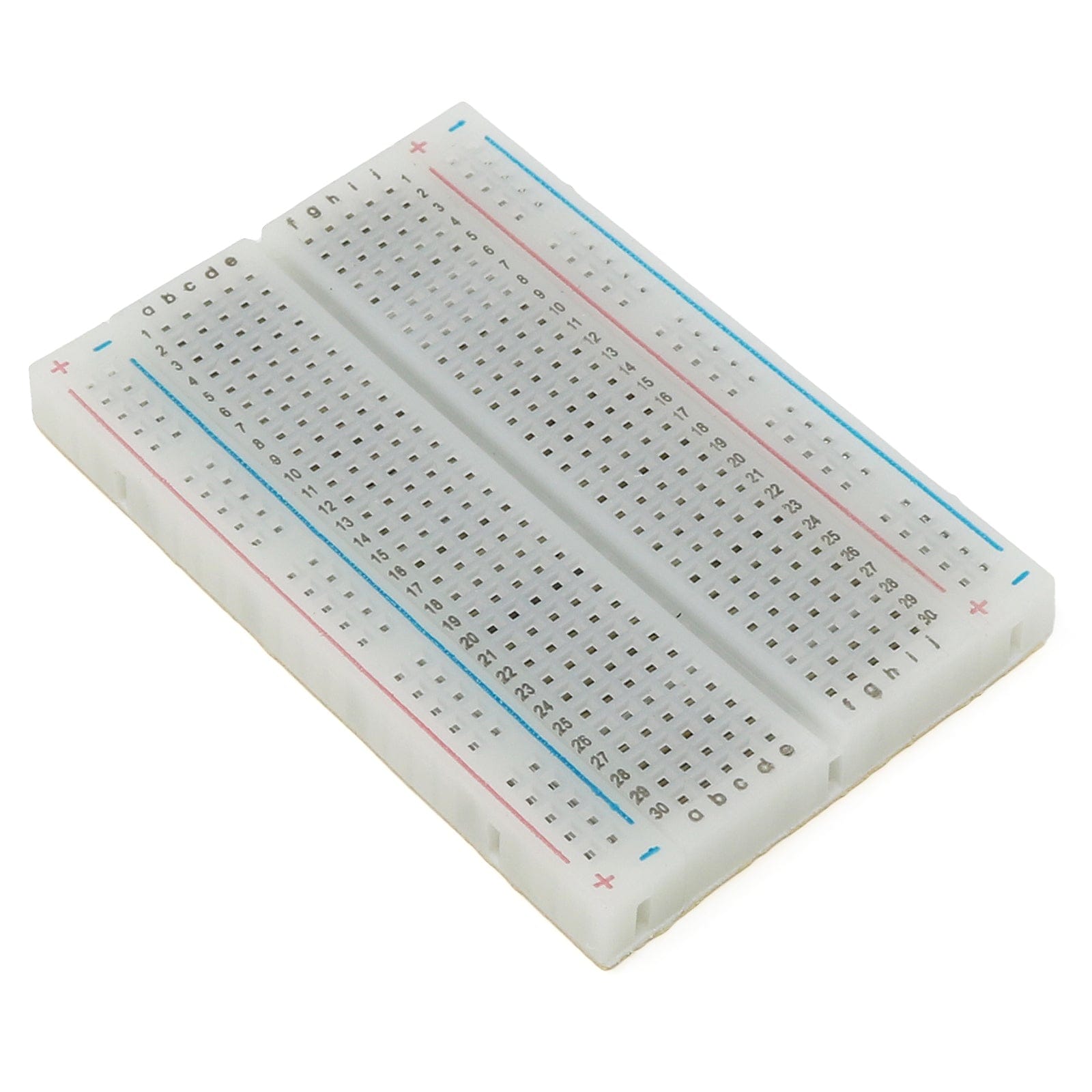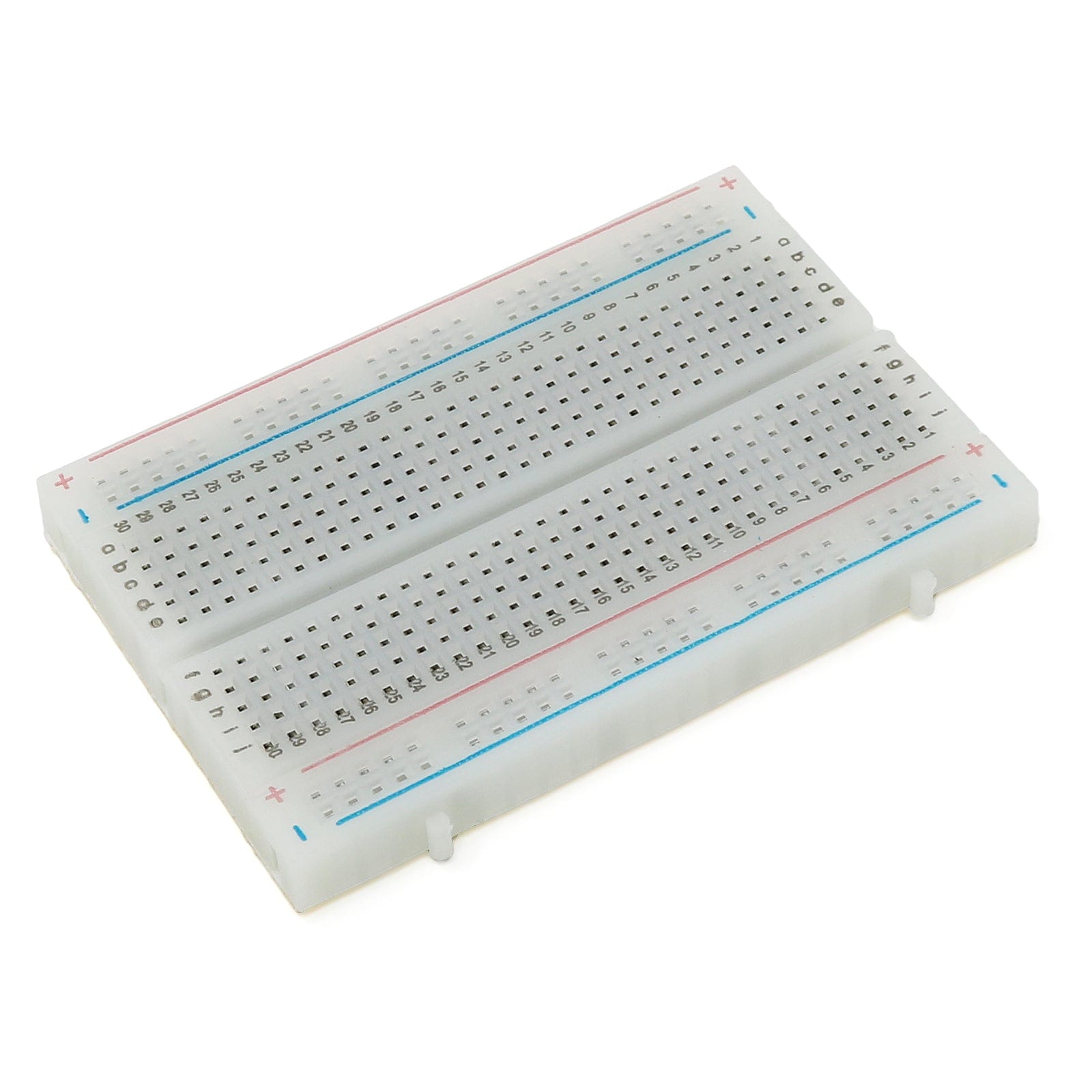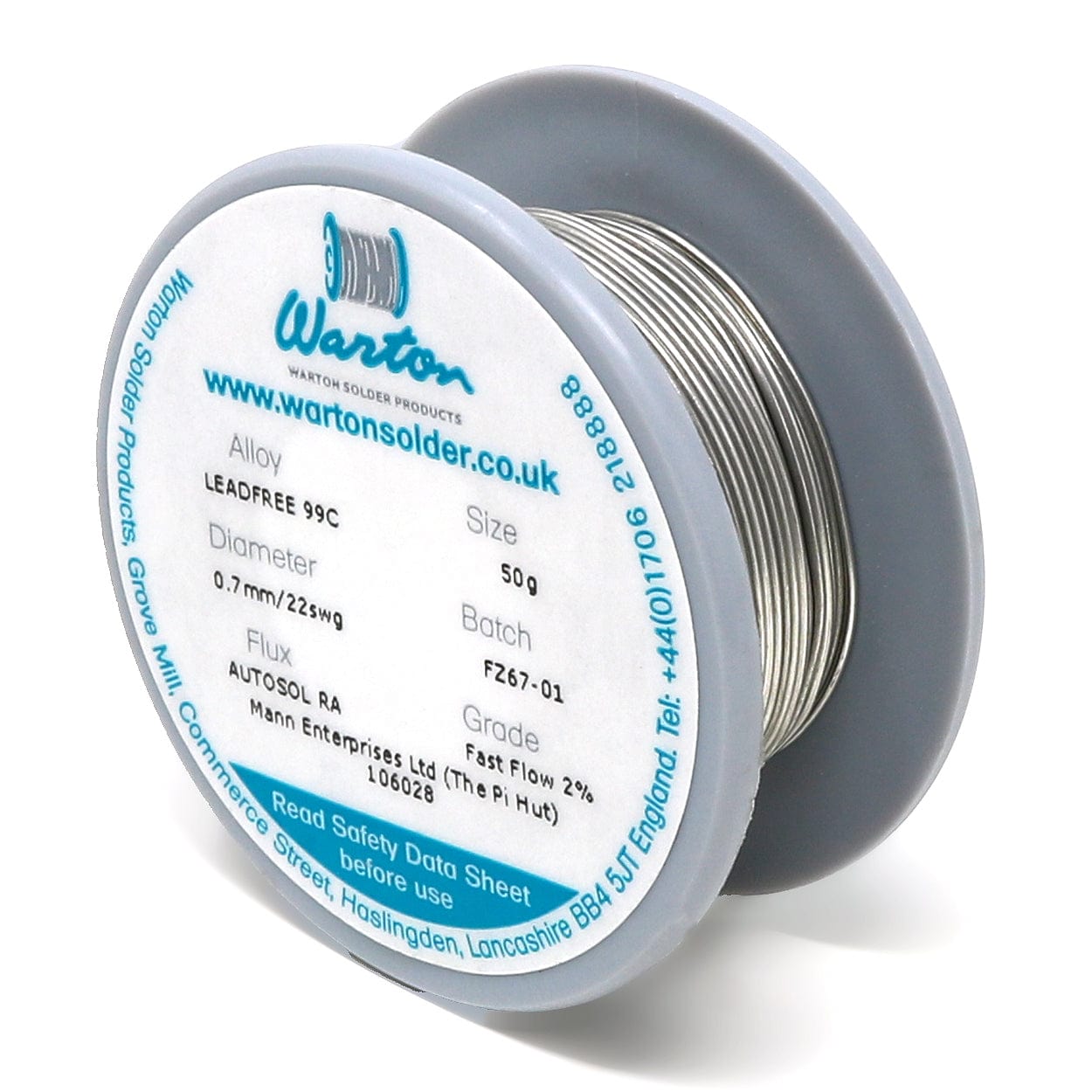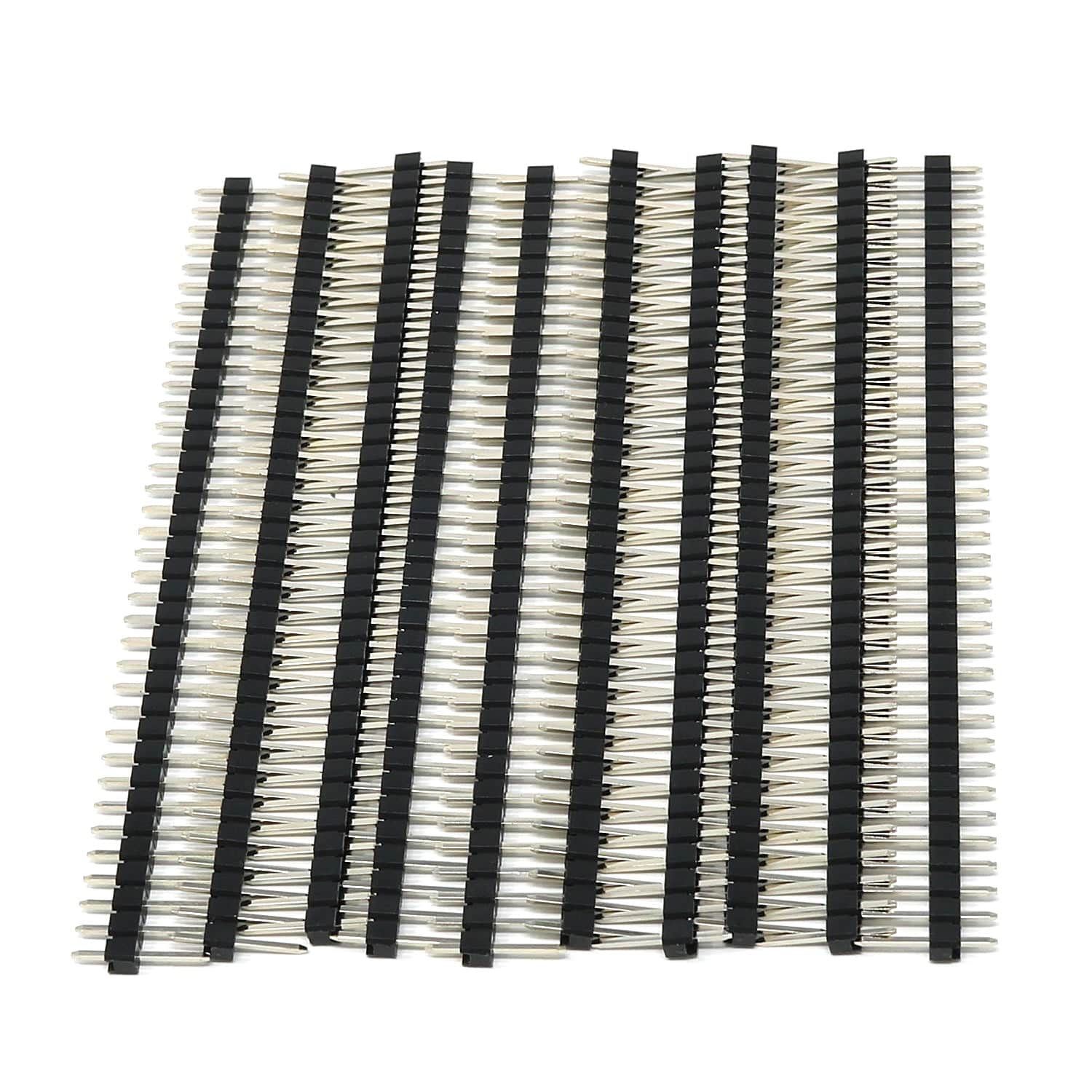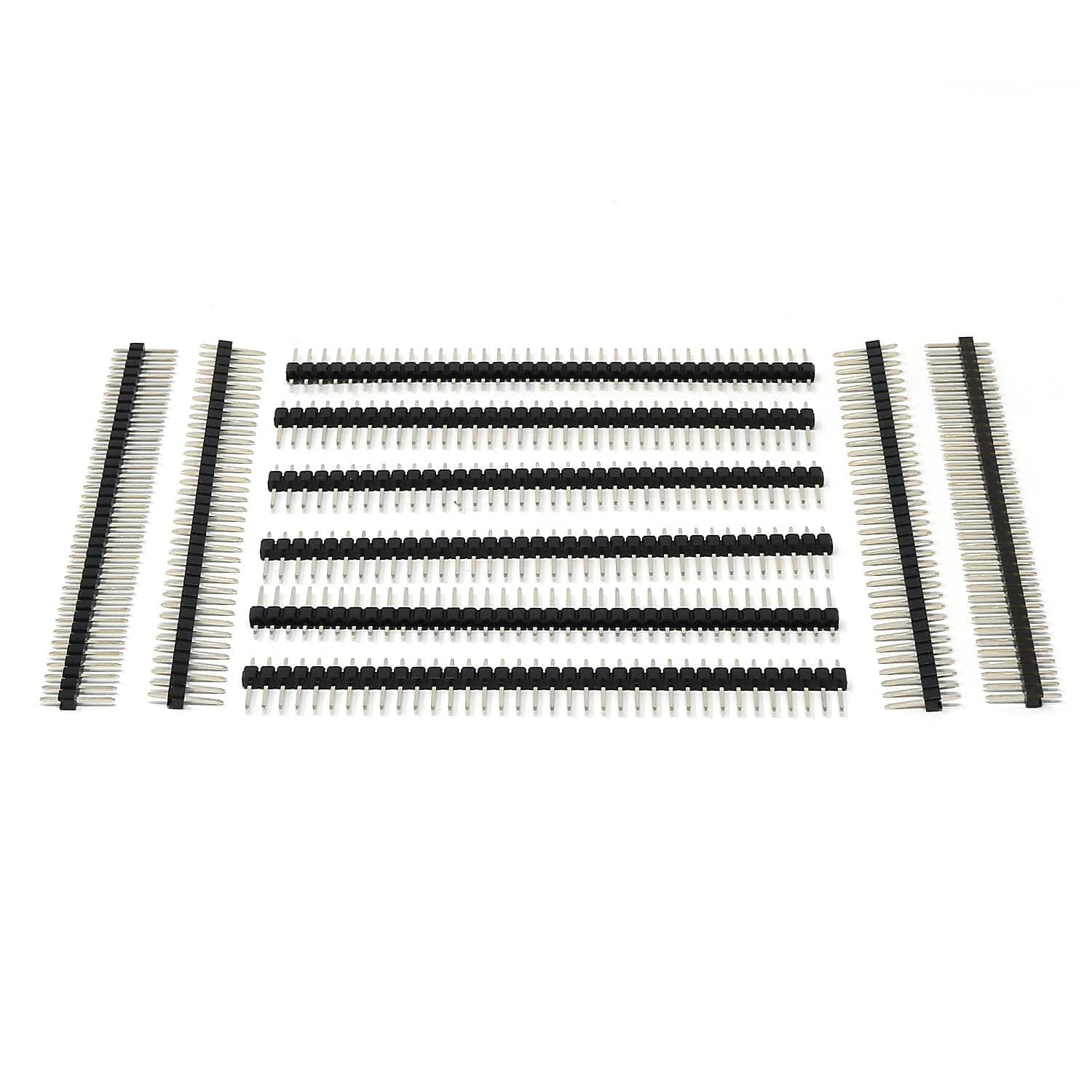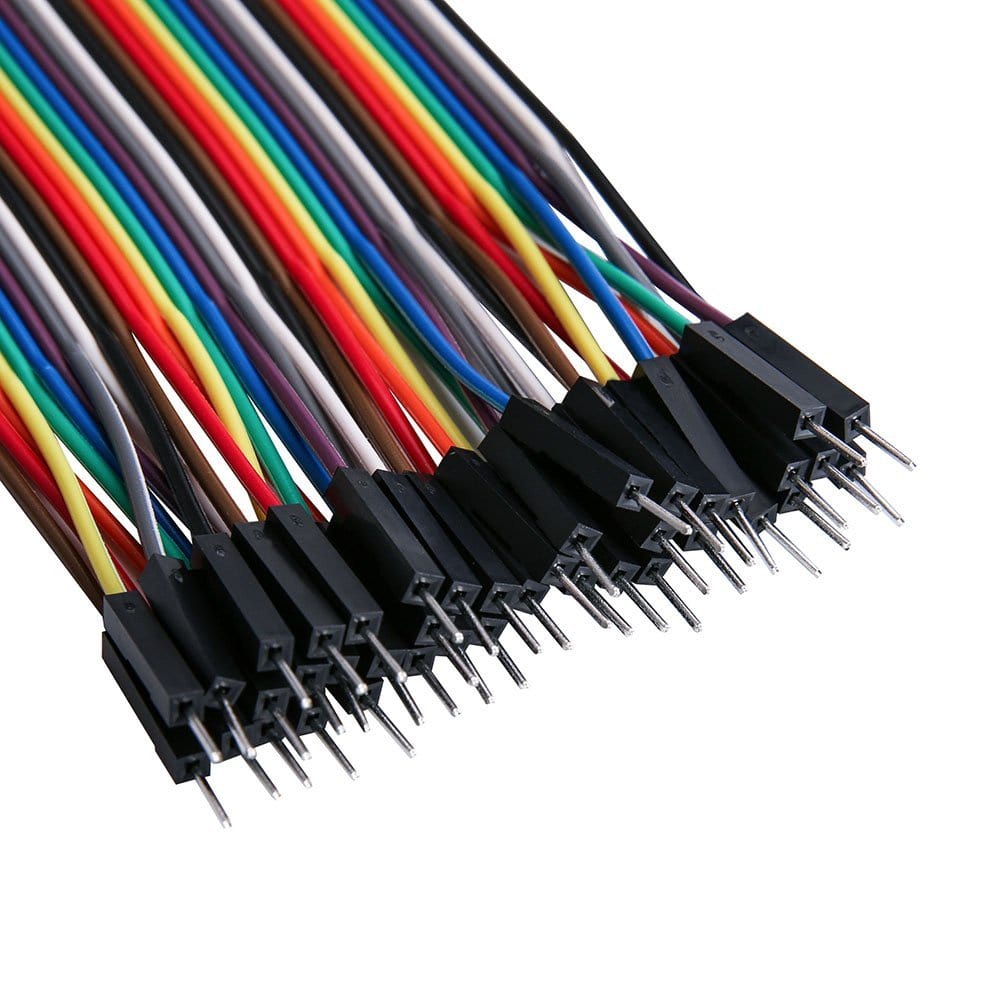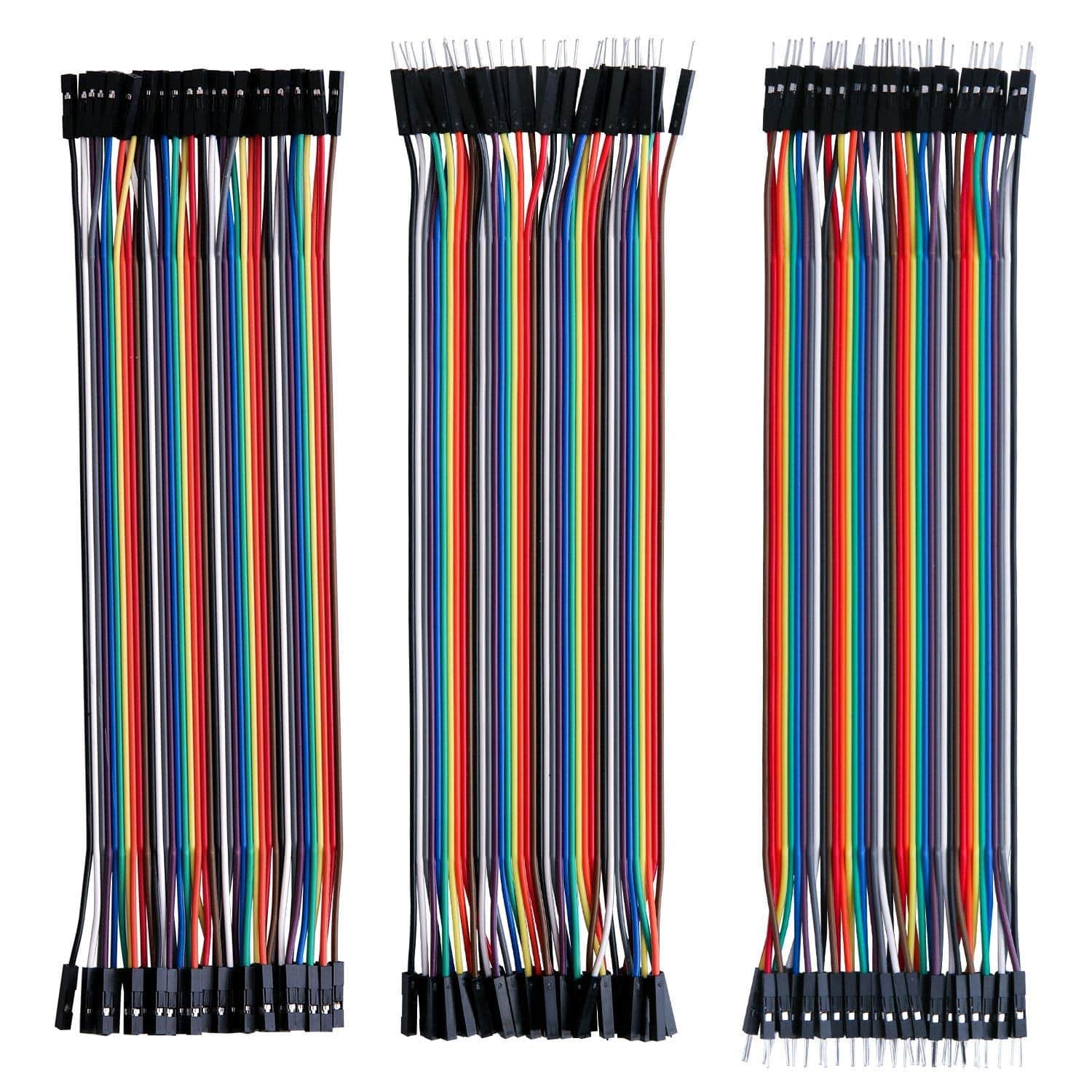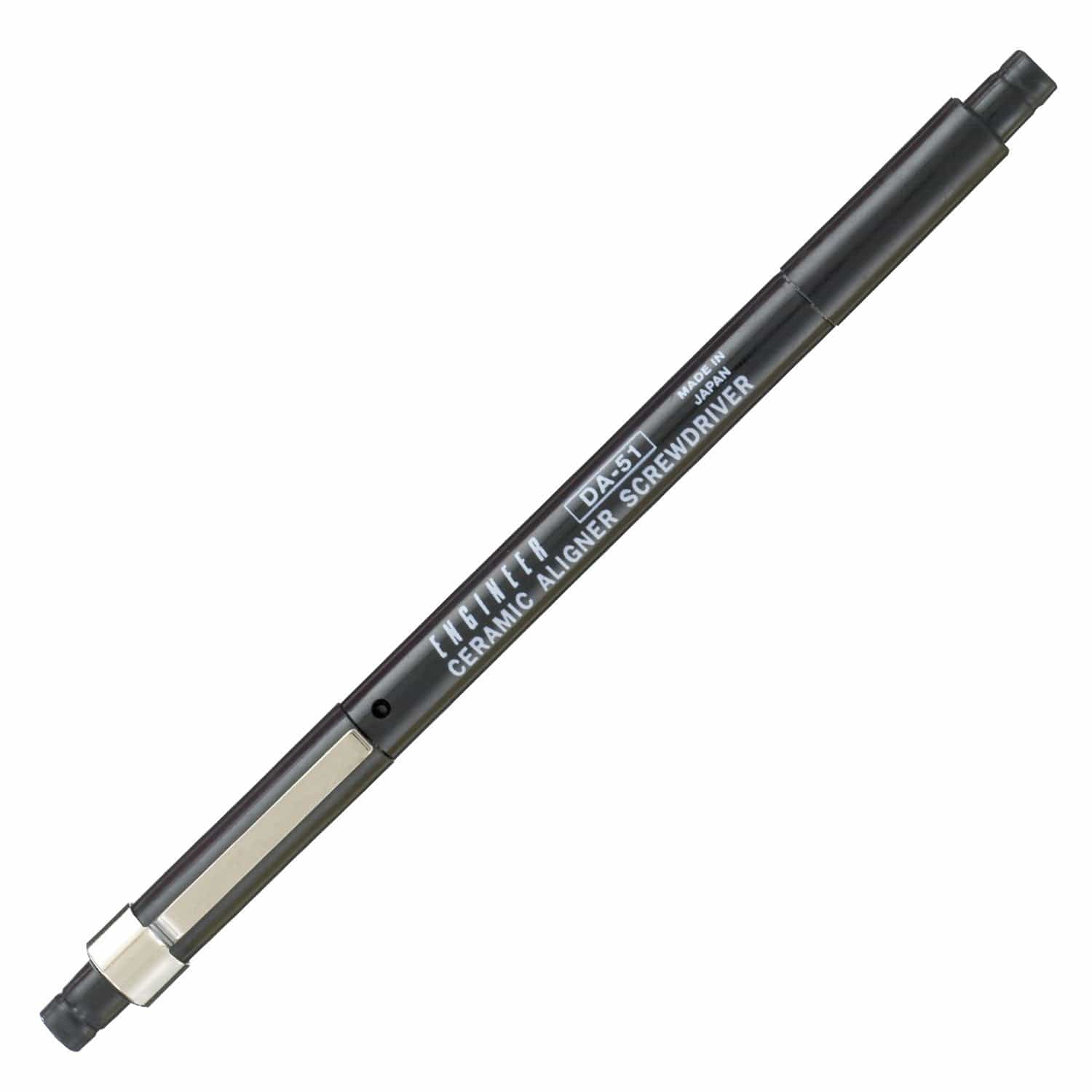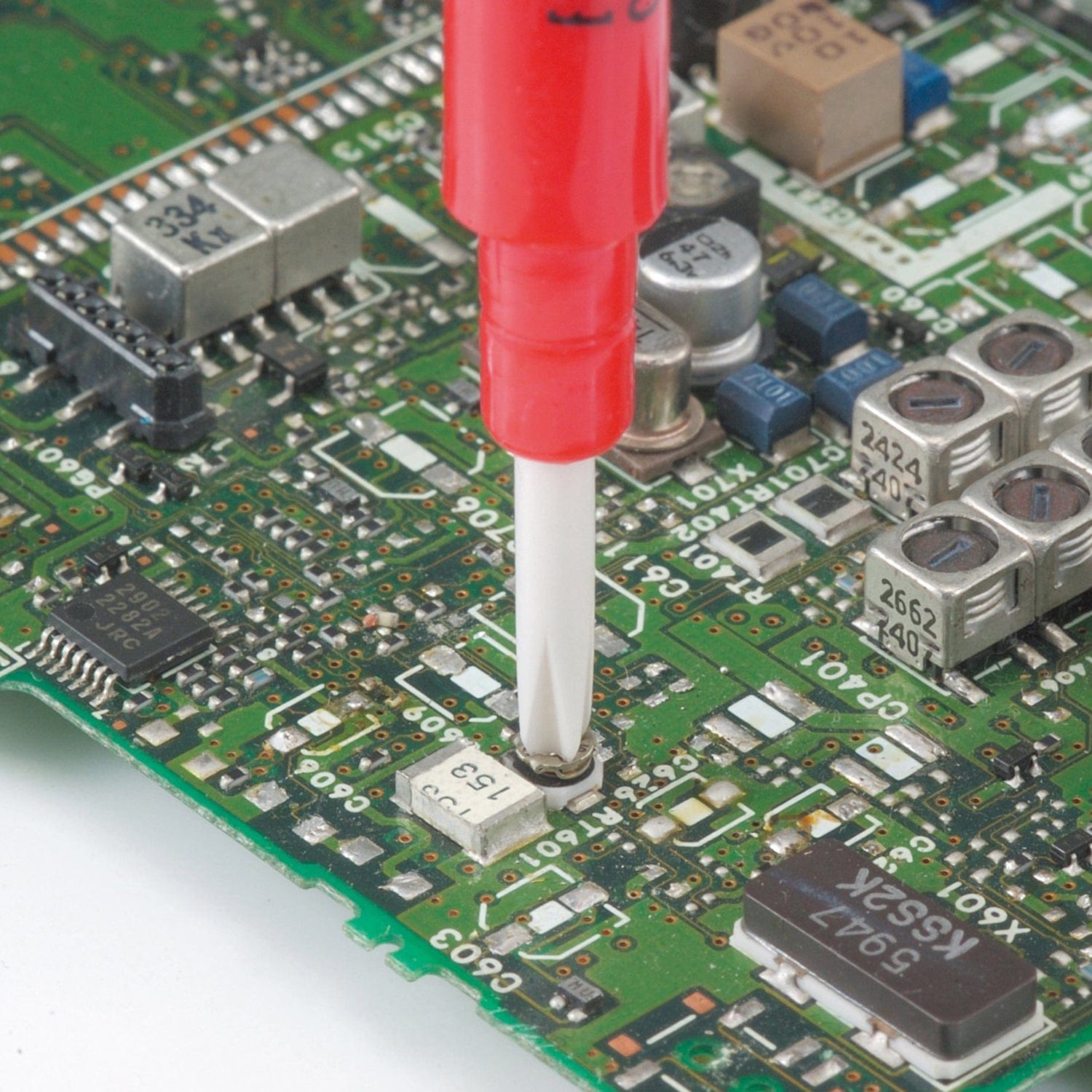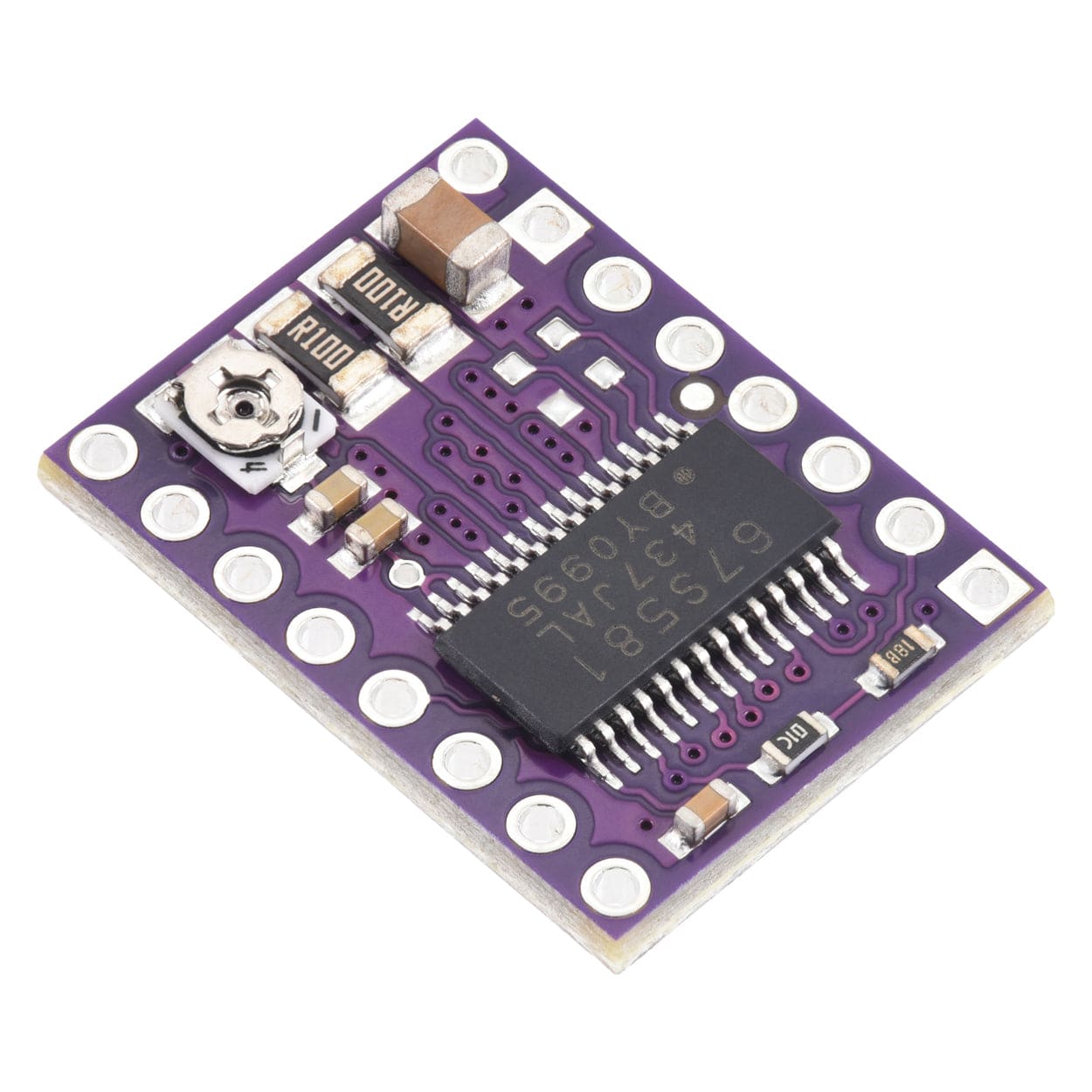
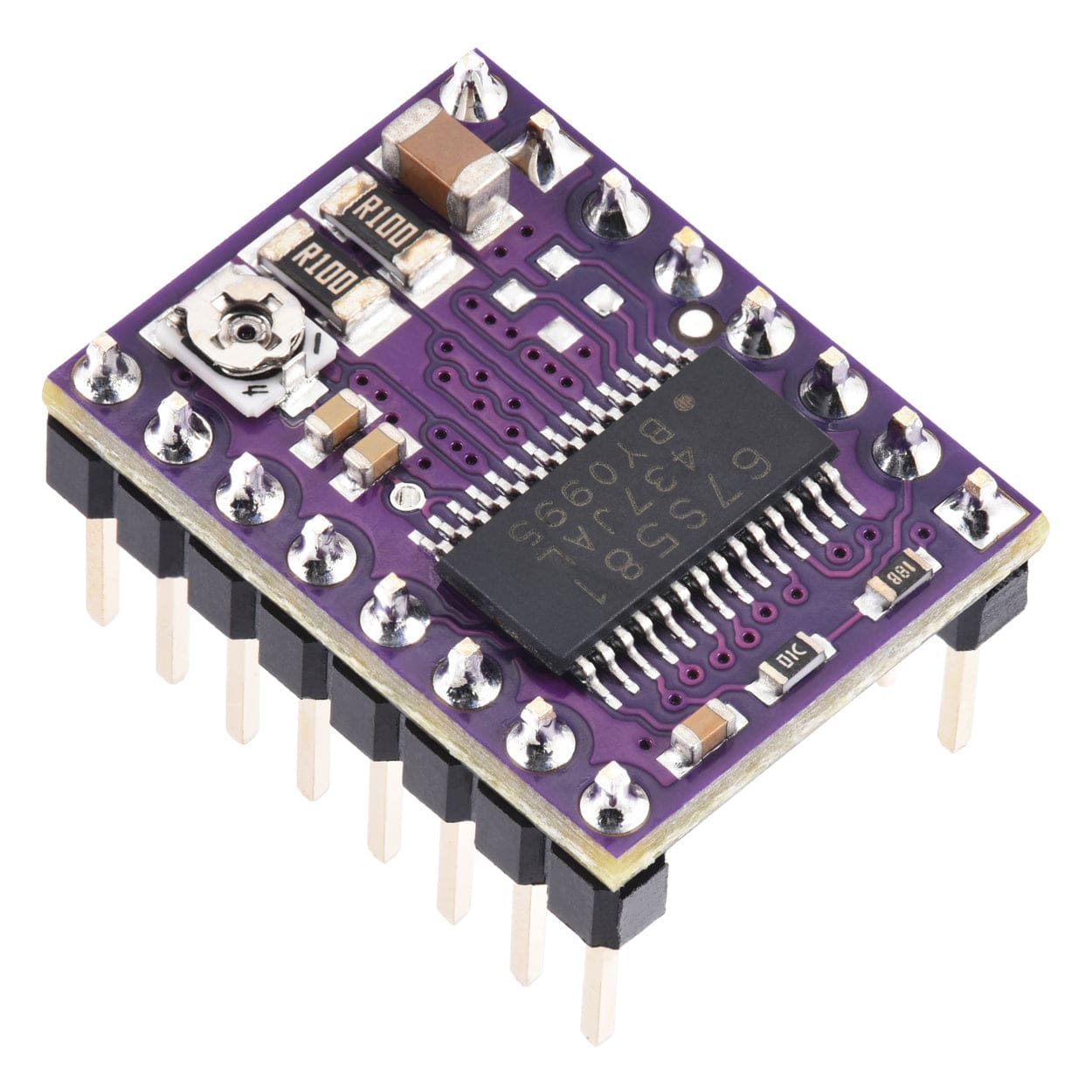
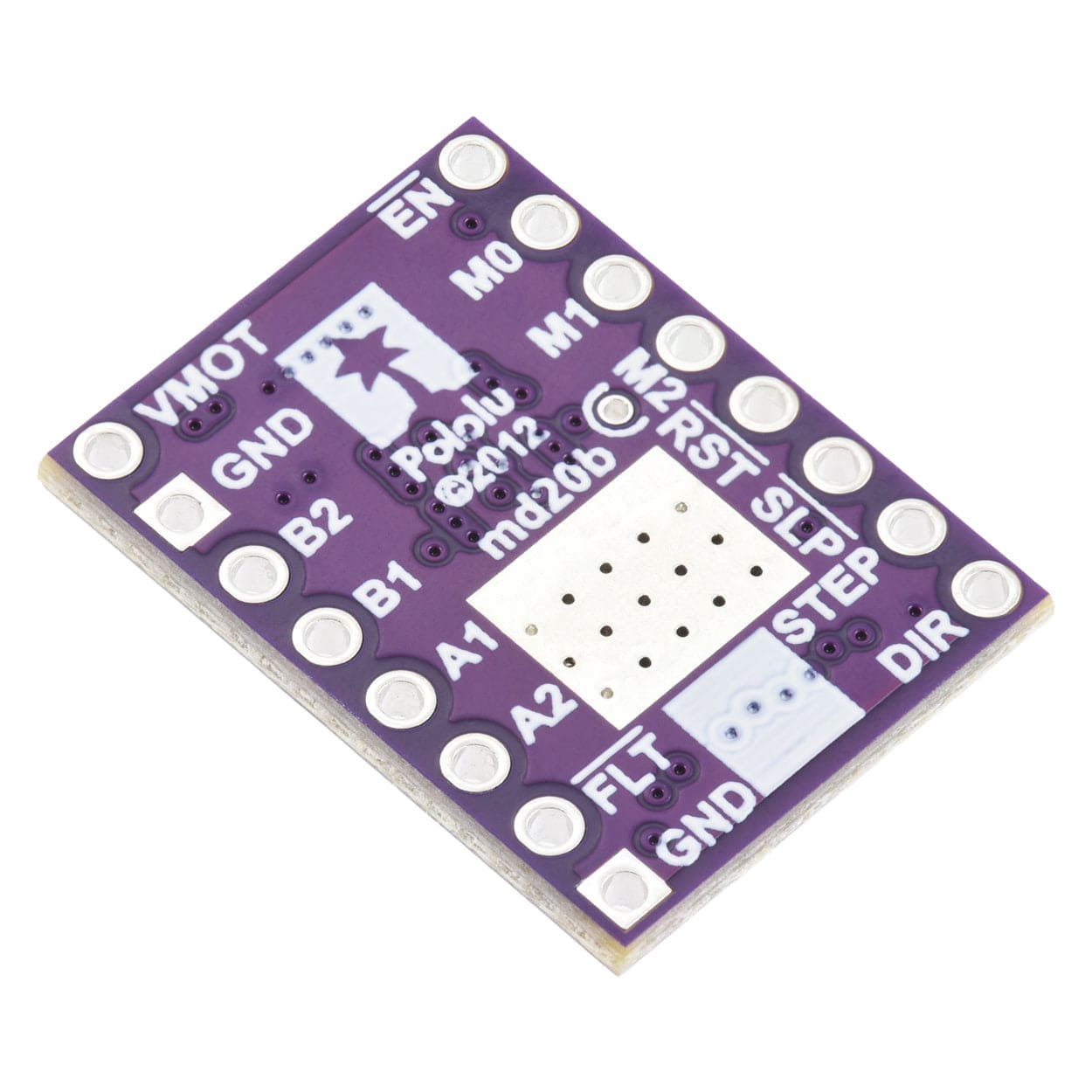
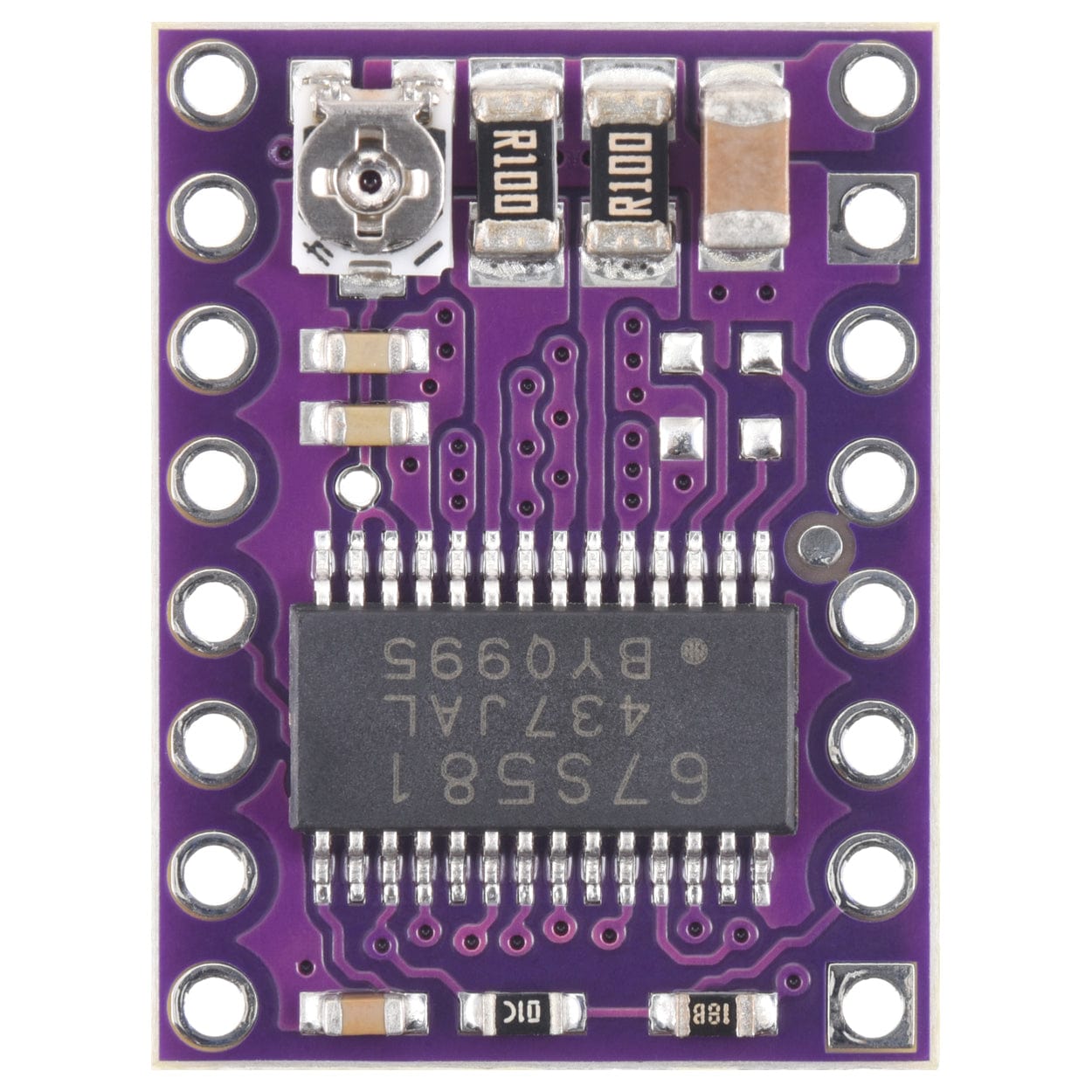
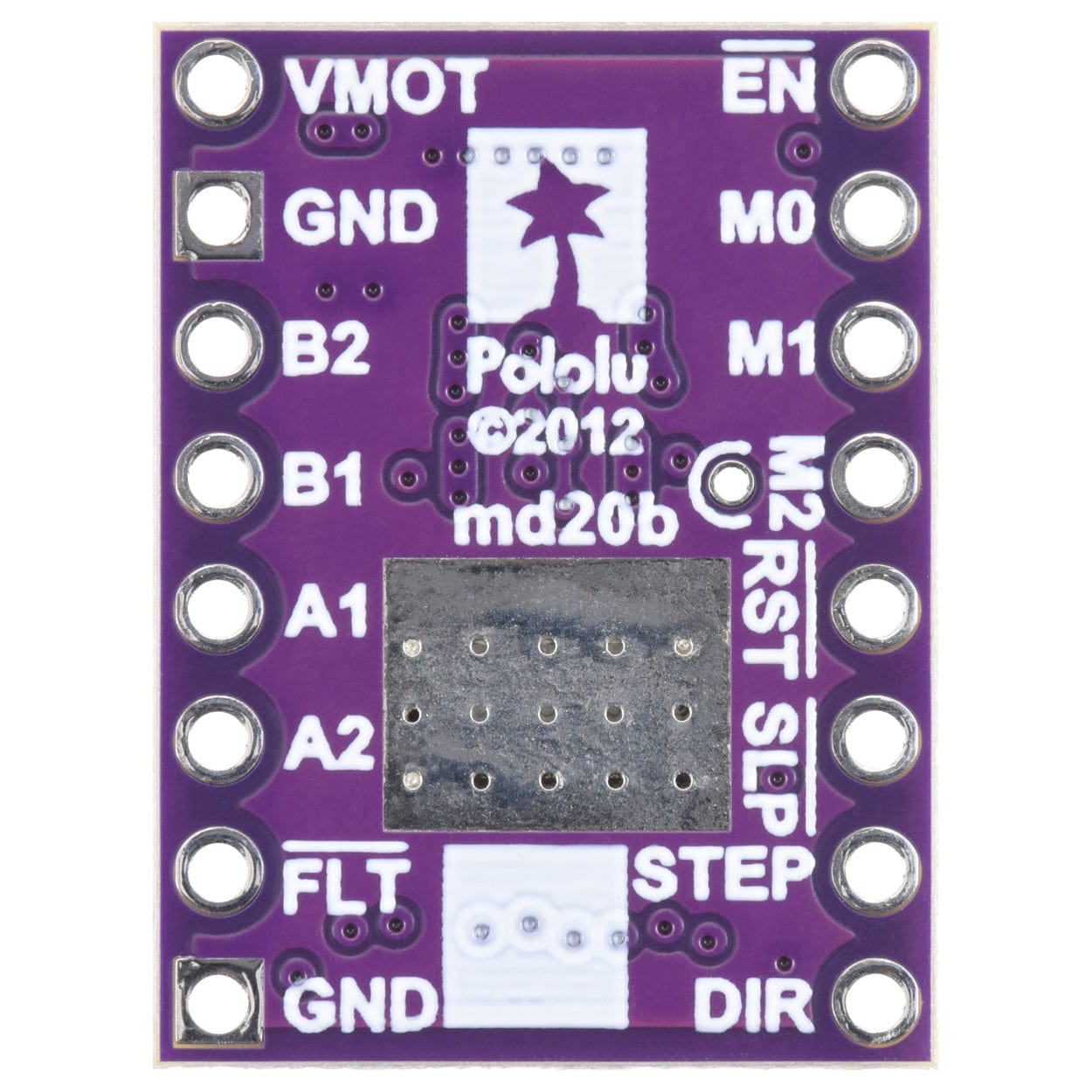


Login / Signup
Cart
Your cart is empty







This Pololu breakout board for Toshiba’s TB67S581FNG microstepping bipolar stepper motor driver features adjustable current limiting, over-current and over-temperature protection, and six microstep resolutions (down to 1/32-step).
It operates from 8.2V to 44V and can deliver up to approximately 1.5A per phase without a heat sink or forced air flow (rated for up to 2.2A per coil with sufficient additional cooling).
The driver has a pinout and interface that are nearly identical to our other Pololu 16-pin stepper motor drivers, so it can be used as an alternative to those boards in many applications.
This product ships with all surface-mount components - including the TB67S581FNG driver IC - installed as shown in the product picture. A version with pre-soldered pin headers is available; select the required option before adding to cart.
Caution: Installing the header pins so that the silkscreen side is up and the components are down can limit the range of motion of the trimpot used to set the current limit. If you plan on installing the header pins in this orientation, please set the current limit before soldering in the pins.


The driver requires a motor supply voltage of 8.2 – 44 V to be connected across VMOT and GND. This supply should have appropriate decoupling capacitors close to the board, and it should be capable of delivering the expected stepper motor current.
Warning: This carrier board uses low-ESR ceramic capacitors, which makes it susceptible to destructive LC voltage spikes, especially when using power leads longer than a few inches. Under the right conditions, these spikes can exceed the 44 V maximum voltage rating for the TB67S581FNG and permanently damage the board, even when the motor supply voltage is as low as 12 V. One way to protect the driver from such spikes is to put a large (at least 47 µF) electrolytic capacitor across motor power (VMOT) and ground somewhere close to the board.
Four, six, and eight-wire stepper motors can be driven by the TB67S581FNG if they are properly connected; a FAQ answer explains the proper wirings in detail.
Warning: Connecting or disconnecting a stepper motor while the driver is powered can destroy the driver. (More generally, rewiring anything while it is powered is asking for trouble.)
Stepper motors typically have a step size specification (e.g. 1.8° or 200 steps per revolution), which applies to full steps. A microstepping driver such as the TB67S581FNG allows higher resolutions by allowing intermediate step locations, which are achieved by energizing the coils with intermediate current levels. For instance, driving a motor in quarter-step mode will give the 200-step-per-revolution motor 800 microsteps per revolution by using four different current levels.
The resolution (step size) selector inputs—DMODE0, DMODE1, and DMODE2—enable selection from the six step resolutions according to the table below. All three selector inputs have internal 100 kΩ pull-down resistors, so leaving these three microstep selection pins disconnected results in full-step mode. For the microstep modes to function correctly, the current limit must be set low enough (see below) so that current limiting gets engaged. Otherwise, the intermediate current levels will not be correctly maintained, and the motor will skip microsteps.
| M2 (DMODE2) | M1 (DMODE1) | M0 (DMODE0) | Microstep Resolution |
| Low | Low | Low | Full step |
| Low | Low | High | Half step |
| Low | High | Low | 1/4 step |
| Low | High | High | 1/8 step |
| High | Low | Low | 1/16 step |
| High | Low | High | 1/32 step |
| High | High | Low | |
| High | High | High |
Each pulse to the STEP (CLK) input corresponds to one microstep of the stepper motor in the direction selected by the DIR (CW/CCW) pin. These inputs are both pulled low by default through internal 100kΩ pull-down resistors. If you just want rotation in a single direction, you can leave DIR disconnected.
The chip has three different inputs for controlling its power states: RST (RESET_X), SLP (SLEEP_X), and EN (ENABLE_X). For details about these power states, see the datasheet. Please note that the driver pulls the SLP pin low through an internal pull-down resistor (the datasheet does not specify the value of this pull-down, but in our tests, we measured it to be around 100 kΩ), and it pulls the RST and EN pins low through internal 100 kΩ; pull-down resistors. These default RST and SLP states are ones that prevent the driver from operating; both of these pins must be high to enable the driver (they can be connected directly to a logic “high” voltage between 2.5 and 5.25 V, or they can be dynamically controlled via connections to digital outputs of an MCU). The default state of the EN pin is to enable the driver, so this pin can be left disconnected.
The TB67S581FNG also features a FLT (LO) output that drives low whenever the H-bridge FETs are disabled as the result of over-current protection or thermal shutdown. The carrier board connects this pin to the SLP pin through a 10 kΩ resistor that acts as a FLT pull-up whenever SLP is externally held high, so no external pull-up is necessary on the FLT pin. Note that the carrier includes a 1.5 kΩ protection resistor in series with the FLT pin that makes it safe to connect this pin directly to a logic voltage supply, as might happen if you use this board in a system designed for the pin-compatible A4988 carrier. In such a system, the 10 kΩ resistor between SLP and FLT would then act as a pull-up for SLP, making the TB67S581FNG carrier more of a direct replacement for the A4988 in such systems (the A4988 has an internal pull-up on its SLP pin). To keep faults from pulling down the SLP pin, any external pull-up resistor you add to the SLP pin input should not exceed 4.7 kΩ.
To achieve high step rates, the motor supply is typically much higher than would be permissible without active current limiting. For instance, a typical stepper motor might have a maximum current rating of 1 A with a 5Ω coil resistance, which would indicate a maximum motor supply of 5 V. Using such a motor with 12 V would allow higher step rates, but the current must actively be limited to under 1 A to prevent damage to the motor.
The TB67S581FNG supports such active current limiting, and the trimmer potentiometer on the board can be used to set the current limit. You will typically want to set the driver’s current limit to be at or below the current rating of your stepper motor. One way to set the current limit is to put the driver into full-step mode and to measure the current running through a single motor coil without clocking the STEP input. The measured current will be 0.7 times the current limit (since both coils are always on and limited to approximately 70% of the current limit setting in full-step mode).
Another way to set the current limit is to measure the voltage on the “ref” pin and to calculate the resulting current limit (the current sense resistors are 0.100Ω). The ref pin voltage is accessible on a via that is circled on the bottom silkscreen of the circuit board. The current limit in amps relates to the reference voltage in volts as follows:
Current Limit = VREF * 2
or, rearranged to solve for VREF:
VREF = Current Limit / 2
So, for example, if you have a stepper motor rated for 1 A, you can set the current limit to 1 A by setting the reference voltage to 0.5 V.
Note: The coil current can be very different from the power supply current, so you should not use the current measured at the power supply to set the current limit. The appropriate place to put your current meter is in series with one of your stepper motor coils.
The TB67S581FNG driver IC has a maximum current rating of 2.5 A per coil, but the current sense resistors further limit the maximum current to 2.2 A, and the actual current you can deliver depends on how well you can keep the IC cool. The carrier’s printed circuit board is designed to draw heat out of the IC, but to supply more than approximately 1.5 A per coil, a heat sink or other cooling method is required.
Warning: This product can get hot enough to burn you long before the chip overheats. Take care when handling this product and other components connected to it.
Please note that measuring the current draw at the power supply will generally not provide an accurate measure of the coil current. Since the input voltage to the driver can be significantly higher than the coil voltage, the measured current on the power supply can be quite a bit lower than the coil current (the driver and coil basically act like a switching step-down power supply). Also, if the supply voltage is very high compared to what the motor needs to achieve the set current, the duty cycle will be very low, which also leads to significant differences between average and RMS currents. Additionally, please note that the coil current is a function of the set current limit, but it does not necessarily equal the current limit setting. The actual current through each coil changes with each microstep. See the TB67S581FNG datasheet for more information.
| Minimum operating voltage | 8.2 V |
| Maximum operating voltage | 44 V |
| Continuous current per phase | 1.5 A |
| Maximum current per phase | 2.2 A |
| Minimum logic voltage | 2.5 V |
| Maximum logic voltage | 5.25 V |
| Microstep resolutions | Full, 1/2, 1/4, 1/8, 1/16, and 1/32 |
| Reverse voltage protection? | N |
| Header pins | Not included |
| Size | 0.6″ × 0.8″ |
| Weight | 1.6 g |








